What is Posterior Canal BPPV?
Benign paroxysmal positional vertigo (BPPV) is a type of positional vertigo. BPPV occurs when free-floating otoconia (tiny crystals which are in every inner ear) move in one of the semicircular canals (canalithiasis) or by otoliths adhered to the cupula, which is the membrane located at one end of each semicircular canal (cupulolithiasis). BPPV is most likely to occur in the posterior canal, accounting for 60-90% of BPPV cases (Kim and Zee, 2014). While the modified Epley is still considered to be the gold standard of treatment by many, newer options have come out, including the BRAND NEW Dias/Supine-Seated maneuver (scroll down for details)!
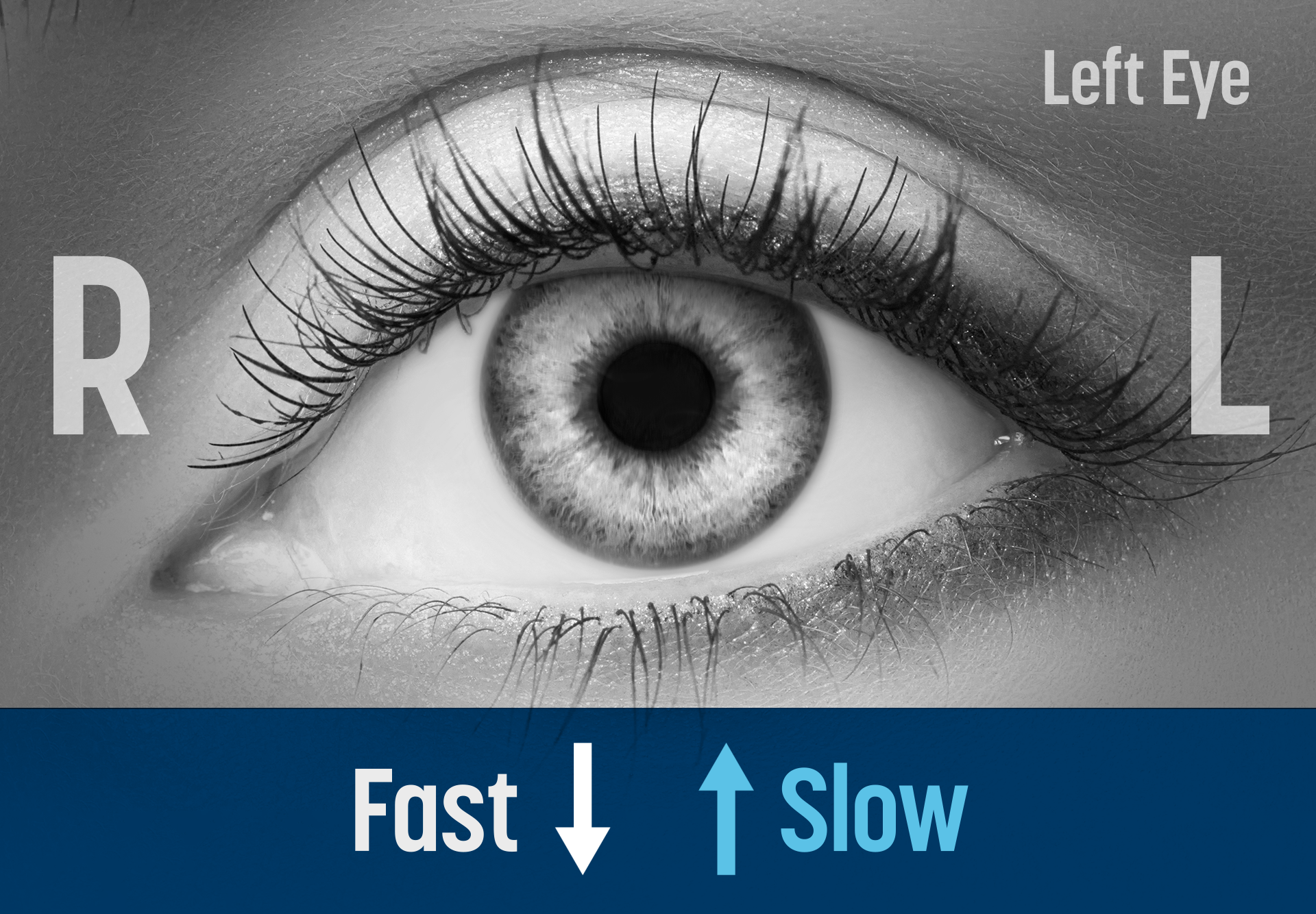
Three Critical Considerations for BPPV Positional Testing
|
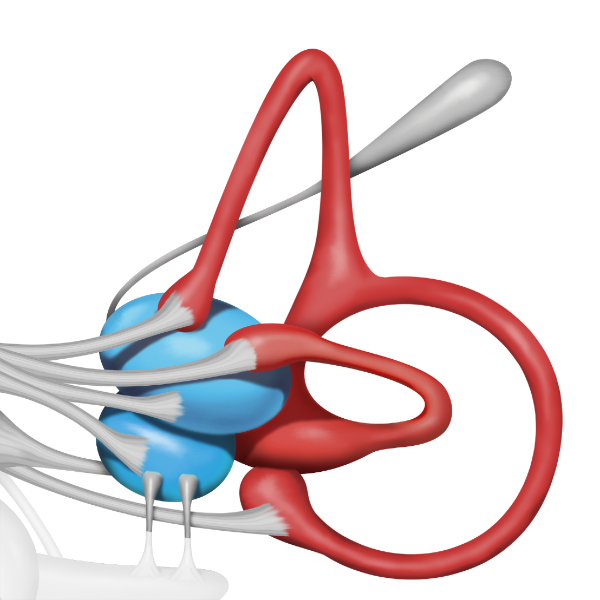
What Works Best? Maneuvers to Clear Posterior Canal BPPV by the Numbers
- “The Classic” Modified Epley or Canalith Repositioning Maneuver or Canalith Repositioning Procedure – 91.3% effective for posterior canalithiasis (Nunez et al., 2000), although not immediately effective in treating cupulolithiasis and only 48% at 1 week (Choi et al., 2020).
- Semont or Liberatory Maneuver – preferred for posterior cupulolithiasis; more than 90% of patients were cured after a maximum of 4 maneuvers, and 83.5% were cured after only 2 maneuvers (Levrat et al., 2003); not more effective than Epley for refractory BPPV (Oh et al., 2017); slightly less likely to have conversion to horizontal canal so may be better for home treatment option (Anagnostou et al., 2014); most effective if performed as a Semont Plus (Strupp et al., 2021)
- Li Maneuver for posterior canal – 87.5% efficacy after 2 sessions (1 session per day) for the posterior canal compared to 91.2% modified Epley maneuver (Li et al., 2017); does not require neck extension or rotation
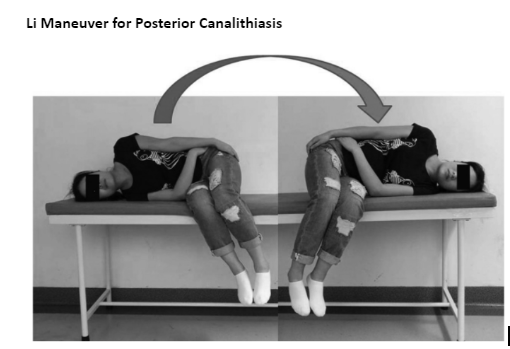
- Gans/hybrid maneuver – 56.7 % of patients exhibited objective improvement (Saberi et al., 2017) on 1st day of treatment; only the Epley and Semont maneuvers were effective at 1 month of follow-up according to recent meta-analysis although more studies are needed on the Gans/hybrid maneuver (Li et al., 2022); less likely for patients to complain of neck pain with Gans than Epley (Saberi et al., 2017)
- Foster/half-somersault maneuver – in a study which had patients performing maneuvers at home, efficacy as measured by reduced nystagmus intensity was only 37% after two Epley maneuvers and 27% after two half-somersaults (Foster et al., 2012); one small study indicating less residual dizziness after Foster as compared to Epley (Khaftari et al., 2021); requires independent mobility, reasonable tolerance to movement, and moderately good flexibility
- Brandt Daroff exercises– resolution of symptoms as measured by the Vestibular Activities and Participation scale at 50% compared to 90% for Epley for canalithiasis (Gupta et al., 2018); minimal immediate success with cupulolithiasis and only 36% at 1 week (Choi et al, 2020); time-consuming since recommendation is 5 repetitions, 3x/day (Amor-Dorado et al., 2012); does not prevent recurrence of BPPV (Helminski et al., 2005); non-specific (treatment is the same regardless of affected side) and may be useful to decrease sensitivity to self-motion or to resolve residual dizziness after BPPV has been cleared (Gebhart et al., 2021)
- NEW Dias/Supine-Seated Approach – effective in 85.19% of patients after a single application of the new maneuver presented and in a further 9.26% after two maneuvers, totaling 94.44% success rate with 1 or 2 maneuvers performed on the same day, although not compared to other maneuvers yet (Rocha and Lefèvre, 2023). Need more studies since this is brand-new.
|
Left side treated in the picture. Timing: 1 minute after nystagmus ends in position 1 (head to the left 45 degrees), 2 minutes in position two (head to the right 90 degrees), and 2 mintues in position 3 (head to the left 45 degrees).
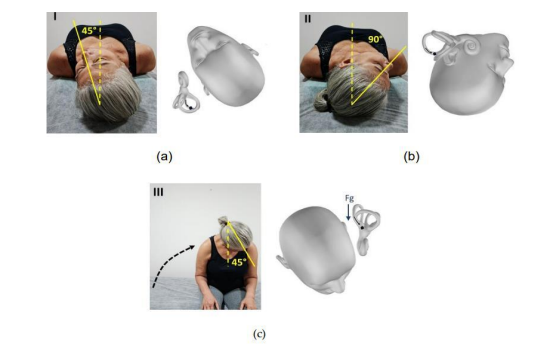
To vibrate or not to vibrate…
When should I consider adding vibration to the mastoid on the affected side during a maneuver designed to clear the posterior canal?
There is no need to add vibration to a standard case. No difference in efficacy has been found between patients with posterior canalithiasis BPPV for those who received vibration and those who did not during modified Epley maneuvers (Ruckenstein and Shepard, 2007; Hain et al., 2000; Motamed et al., 2004).However, vibration* to the mastoid on the affected side during the modified Epley might be helpful for a challenging case. Case reports have found some usefulness in BPPV resistant to conventional treatment since it possibly frees canal jams (Faralli et al., 2017; Griech and Carroll, 2018)
My favorite vibration tools are as follows:
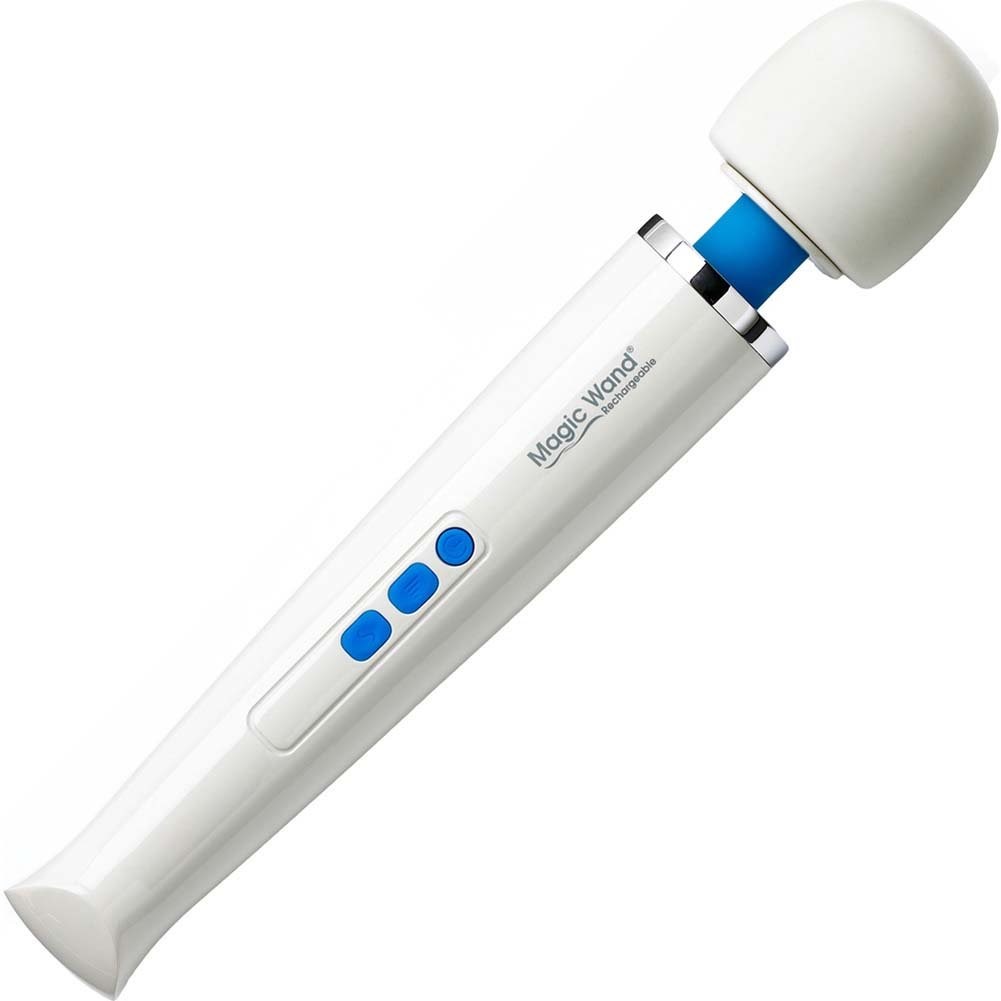
- NC 70209, North Coast Medical Inc.; $25; most affordable option but requires C batteries; small head of vibration tool is best for more sensitive patients
- Magic Wand $135 for the rechargeable option (worth it); doubles value as a tool for manual therapy for orthopedic issues; larger head of vibration tool is best for medium and larger patient head sizes; rechargeable for cord-free use

